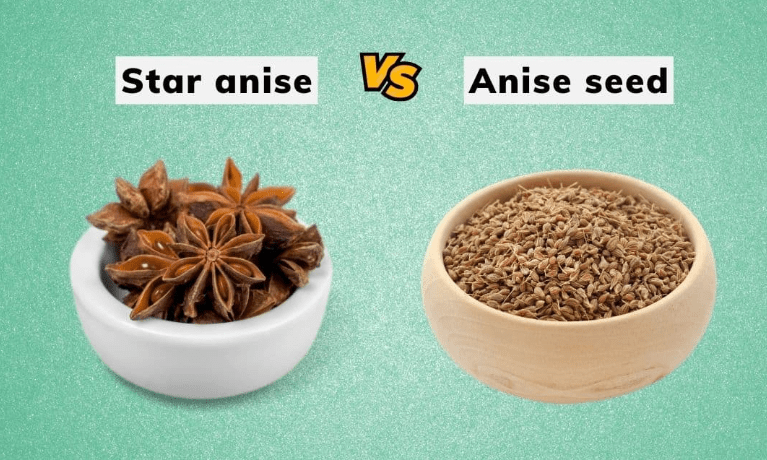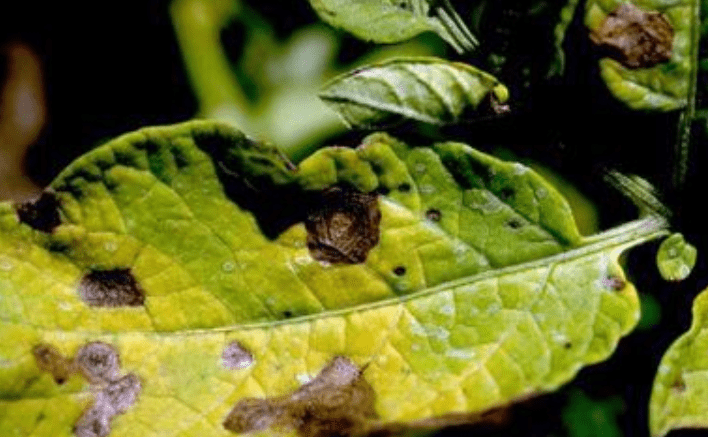
How to Start Growing Anise: A Step-by-Step Guide
Growing anise can be a rewarding and aromatic addition to your garden. This step-by-step guide will walk you through everything you need to know to successfully grow anise, from choosing the right location and soil to planting and caring for your anise plants. Whether you’re a beginner or an experienced gardener, this guide will provide you with the knowledge and tips to successfully grow anise in your own garden.
Table of Contents
ToggleUnderstanding Anise
1.Botanical Profile
Anise, also known as Pimpinella anisum, is an herbaceous annual plant that is known for its licorice-like flavor and aroma. It is a member of the carrot family and is native to the Eastern Mediterranean region.
- Scientific name: Pimpinella anisum
- Common names: Anise, aniseed
- Family: Apiaceae (carrot family)
A.Description of the plant (appearance, height, leaves, flowers)
Anise is a beautiful, delicate plant that can grow up to 2-3 feet tall. It has feathery, fern-like leaves and produces small white flowers that are clustered together. The plant has a sweet, aromatic scent and the seeds are commonly used in cooking and for making teas. Anise is a great addition to any garden, and it’s relatively easy to grow as long as you provide it with the right conditions.
B.Native habitat and growing regions
Anise is native to the Eastern Mediterranean region and can also be found growing in other warm, dry climates. It is commonly grown in regions with a Mediterranean climate, including Southern Europe, North Africa, and Southwest Asia. Anise plants thrive in well-draining soil and plenty of sunlight, making them a great addition to gardens in these regions. If you live in a cooler climate, you can still grow anise by starting seeds indoors and transplanting them outside once the weather warms up. With the right care and attention, you can successfully grow anise in a variety of different growing regions.
2.Uses of Anis
A. Culinary uses (spice, flavoring)

Anise is a versatile plant with a variety of culinary uses. The seeds of the anise plant are commonly used as a spice and flavoring in cooking and baking. Their sweet, aromatic flavor makes them a popular ingredient in a variety of dishes, including breads, cakes, cookies, and even in some savory dishes. Anise seeds are also used to flavor drinks, such as teas and liqueurs. Additionally, anise seeds are often used to add a hint of licorice flavor to dishes, making them a unique and flavorful addition to any kitchen. Whether you are an experienced cook or just starting out, adding anise to your herb garden can provide you with a versatile and delicious ingredient to experiment with in your cooking.
B. Medicinal properties and benefits

Anise has a long history of being used for its medicinal properties and benefits. It is often used as a natural remedy for digestive issues such as indigestion, bloating, and gas. Anise seeds can also be made into a tea that may help soothe coughs and relieve symptoms of respiratory conditions. Additionally, anise is believed to have anti-inflammatory and antimicrobial properties, making it a popular ingredient in natural skincare products. When used in aromatherapy, the scent of anise is thought to have a calming and relaxing effect on the mind and body. Overall, anise is a versatile and beneficial herb that can be used in a variety of ways to promote health and well-being.
C.Other uses (aromatherapy, cosmetics)
Anise is a versatile and beneficial herb that can be used in a variety of ways to promote health and well-being. In addition to its culinary uses, anise has a long history of being used for its medicinal properties and benefits. It is often used as a natural remedy for digestive issues such as indigestion, bloating, and gas, and can be made into a tea to soothe coughs and respiratory conditions. Anise is also believed to have anti-inflammatory and antimicrobial properties, making it a popular ingredient in natural skincare products. When used in aromatherapy, the scent of anise is thought to have a calming and relaxing effect on the mind and body. Overall, anise is a valuable herb to have in your garden for both cooking and natural health and beauty remedies.
Preparing to Grow Anise
1.Selecting the Right Location
Selecting the Right Location is crucial for successfully growing anise. Anise plants thrive in full sun, so it’s important to choose a location in your garden that receives at least 6-8 hours of sunlight each day. Anise also prefers well-drained soil with a pH level between 5.5 and 6.5. Before planting, you can improve the soil’s drainage and fertility by adding organic matter like compost or aged manure. It’s also a good idea to choose a location that is protected from strong winds, as anise plants can be delicate and may not withstand harsh conditions. Once you’ve found the right spot, you can move on to the next steps of planting and caring for your anise plants.
A.Climate requirements(temperature, humidity)
Climate requirements are an important factor to consider when growing anise. Anise plants thrive in warm climates and require a long, hot growing season to reach their full potential. They are typically best suited for USDA hardiness zones 4-9, but can also be grown as an annual in cooler climates. It’s important to choose a location in your garden that receives plenty of sunlight, as anise plants require at least 6-8 hours of direct sunlight per day. Additionally, anise prefers well-drained soil with a pH level between 5.5 and 6.5. Before planting, you can improve the soil’s drainage and fertility by adding organic matter like compost or aged manure. It’s also a good idea to choose a location that is protected from strong winds, as anise plants can be delicate and may not withstand harsh conditions. By taking these climate requirements into account, you can ensure that your anise plants have the best chance of success in your garden.
2.Obtaining Seeds

When it comes to obtaining anise seeds, you have a few options. You can purchase seeds from a reputable nursery or garden center, or you can collect seeds from existing anise plants. If you choose to collect seeds, simply wait until the seed heads have turned brown and then harvest them. Once you have your seeds, it’s important to store them in a cool, dry place until you are ready to plant them. You can also start anise plants from cuttings or transplants, but growing from seeds is the most common method. Just make sure to follow the proper steps for starting your seeds indoors or directly in the garden, depending on your climate and growing season. By obtaining quality seeds and following the right planting methods, you can ensure the best chance of success when growing anise.
A.Choosing high-quality seeds
Choosing high-quality seeds is the first step in starting your anise plants. Look for seeds from a reputable source, such as a nursery or garden center, to ensure that they are of good quality. You can also consider collecting seeds from existing anise plants if you have them in your garden. When collecting seeds, wait until the seed heads have turned brown and harvest them for planting. It’s important to store the seeds in a cool, dry place until you are ready to plant them.
Starting anise plants from seeds is the most common method, but you can also start them from cuttings or transplants. However, be sure to follow the proper steps for starting your seeds indoors or directly in the garden, depending on your climate and growing season. By obtaining high-quality seeds and following the right planting methods, you can increase the likelihood of success when growing anise in your garden.
B.Seed preparation and storage
Seed preparation and storage are important steps in the process of growing anise.It’s important to store the seeds in a cool, dry place until you are ready to plant them. This will help to keep the seeds viable and ensure that they germinate successfully when planted. Starting anise plants from seeds is the most common method, but you can also start them from cuttings or transplants. However, be sure to follow the proper steps for starting your seeds indoors or directly in the garden, depending on your climate and growing season.
By obtaining high-quality seeds and following the right planting methods, you can increase the likelihood of success when growing anise in your garden. Taking the time to properly prepare and store your seeds will set you on the right path for a successful anise garden.
Planting Anise
1.Soil Preparation
Soil Preparation is an important step in the process of growing anise. Anise plants thrive in well-draining soil that is rich in organic matter. Before planting, it is important to prepare the soil by loosening it and removing any debris or weeds. You can also add compost or other organic matter to enrich the soil and improve its texture. This will provide your anise plants with the nutrients they need to grow and flourish. Once the soil is prepared, you can plant your anise seeds or transplants according to the instructions on the seed packet or plant tag. Be sure to water the plants regularly and provide them with adequate sunlight to ensure that they thrive. With the proper soil preparation and planting techniques, you can successfully grow anise in your garden.
2.Sowing Seeds
When sowing anise seeds, it is important to choose a location that receives full sunlight and has well-draining soil. You can start anise seeds indoors about 8-10 weeks before the last frost date in your area, or you can sow them directly into the garden once the soil temperature reaches around 60°F (16°C). Before sowing the seeds, prepare the soil by loosening it and adding organic matter. Plant the seeds ¼ inch deep and 12 inches apart. Water the seeds gently after planting to ensure the soil is moist. As the seeds germinate and the seedlings grow, be sure to keep the soil consistently moist but not waterlogged. With proper care and attention, your anise seeds should sprout and grow into healthy plants.
3.Germination Process
The germination process for anise seeds typically takes about 7-14 days. During this time, it’s important to keep the soil consistently moist and provide the seeds with adequate sunlight. As the seedlings begin to grow, it’s important to thin them out to ensure proper spacing, which will allow for better growth and airflow. With proper care and attention, the germinated anise seeds should develop into healthy and thriving plants.
Caring for Anise Plants
1.Watering
Anise plants should be watered regularly, making sure to keep the soil consistently moist but not waterlogged. It’s important to monitor the moisture level of the soil, especially during dry periods, to ensure the plants are getting the water they need to thrive.
2.Fertilizing
Anise plants can benefit from a balanced fertilizer applied every 4-6 weeks during the growing season. This will provide the necessary nutrients for the plants to flourish and produce healthy foliage and seeds.
3.Weed and Pest Control
Weed and pest control are important aspects of caring for anise plants. Weeds can compete with anise plants for nutrients and water, so it’s essential to keep the area around the plants free of weeds. This can be done through regular weeding and mulching to suppress weed growth.
In terms of pest control, anise plants can be susceptible to aphids, spider mites, and caterpillars. To prevent and control these pests, you can use insecticidal soap or neem oil, which are safe and effective options for organic pest control. It’s important to monitor your plants regularly for signs of pest infestation and take appropriate action if necessary.
4.Pruning and Maintenance
Anise plants require minimal pruning, but it’s important to remove any dead or damaged foliage to promote healthy growth. You can also prune the plants to improve air circulation and control their size. Additionally, it’s important to remove any spent flower heads to encourage new growth and seed production. Regular maintenance, such as removing weeds and checking for pests, is essential to keep your anise plants healthy and thriving. By following these care guidelines, you can ensure that your anise plants continue to grow and produce flavorful seeds for your culinary and medicinal needs.
Harvesting Anise
1.When to Harvest
Anise plants are typically ready for harvest when the seed heads have turned a light brown color and are dry to the touch. This usually occurs around 120-150 days after planting. You can test the readiness of the seeds by gently rubbing the seed heads between your hands; if the seeds easily come off, they are ready to be harvested.
2.How to Harvest
To harvest the anise seeds, simply snip off the seed heads from the plant using garden shears or scissors. You can then lay the seed heads out to dry in a warm, well-ventilated area for about 1-2 weeks. Once completely dry, you can gently crush the seed heads to release the seeds. Store the seeds in an airtight container in a cool, dark place until you are ready to use them.
3.Tips for Harvesting
It’s best to harvest anise seeds in the morning when the plants are dry, as moisture can affect the flavor and quality of the seeds. Be sure to wear gloves when handling the seed heads, as the plant can cause skin irritation in some individuals. Additionally, be mindful of any bees or other pollinators that may be visiting the flowers during the harvesting process.
Post-Harvest Handling
1.Drying and Storing Seeds
After harvesting the anise seeds, it is important to dry them thoroughly before storing. This can be done by laying the seed heads out in a warm, well-ventilated area for 1-2 weeks. Once the seeds are completely dry, they can be gently crushed to release the seeds. It is best to store the seeds in an airtight container in a cool, dark place until ready for use. Properly dried and stored seeds can last for up to a year.
2.Storing Fresh Anise
If you have fresh anise, it’s best to store it in the refrigerator in a plastic bag or wrapped in a damp paper towel to keep it fresh for up to a week. You can also freeze fresh anise for longer storage, simply chop it up and place it in a freezer-safe bag or container. This will allow you to have anise on hand for cooking and baking whenever you need it.
Troubleshooting Common Problems
1.Common Growing Issues
Some common growing issues for anise plants include overwatering, which can lead to root rot, and under-watering, which can cause the plant to wilt and die. Anise plants also do not tolerate transplanting well, so it’s best to sow seeds directly in the garden or in a large container. Additionally, anise plants may be susceptible to pests such as aphids, so it’s important to regularly inspect the plants and take appropriate measures to control any infestations. Overall, providing well-drained soil, adequate sunlight, and regular watering can help prevent many common growing issues with anise plants.
2.Pests and Diseases

Anise plants may be susceptible to pests such as aphids, which can be controlled with insecticidal soap or neem oil. It’s important to regularly inspect the plants for signs of infestation and take appropriate measures to control any pests. Additionally, anise plants can be prone to diseases such as powdery mildew, which can be treated with fungicidal sprays. Providing proper air circulation and avoiding overhead watering can help prevent diseases from affecting the plants. Proper care and maintenance can help prevent and address any pests and diseases that may affect anise plants.
In conclusion, growing anise can be a rewarding and enjoyable experience, whether for personal use or for selling. By following the steps outlined in this guide and paying attention to the specific needs of the anise plant, you can successfully grow and harvest an abundant crop. Remember to provide proper care and attention to your plants, and you’ll soon be enjoying the aromatic and flavorful benefits of your homegrown anise. Happy gardening!
Frequently Asked Question
Anise is a flowering plant native to the eastern Mediterranean region and Southwest Asia. It is known for its licorice-like flavor and is often used in cooking and herbal medicine.
Yes, anise can be grown at home in a garden or in a container. It requires well-drained soil, plenty of sunlight, and regular watering.
Anise seeds can be planted in the spring after the last frost. They can also be started indoors and then transplanted outside once the weather warms up.
Anise seeds should be planted about 1/4 inch deep in the soil and spaced 6-8 inches apart. Water the seeds gently after planting and keep the soil consistently moist until the seeds germinate.
Anise plants typically take about 120 days to reach maturity. The flowers will bloom in midsummer and the seeds can be harvested in the fall.
When the anise flowers have dried out and turned brown, the seeds are ready to be harvested. Cut the flower heads and place them in a paper bag to dry further. Once dry, shake the bag to release the seeds.
Anise seeds should be stored in an airtight container in a cool, dark place. They will retain their flavor for up to a year.
Yes, anise has a long history of use in herbal medicine. It is believed to have digestive, respiratory, and hormonal benefits and can be used to make teas, tinctures, and essential oils.
